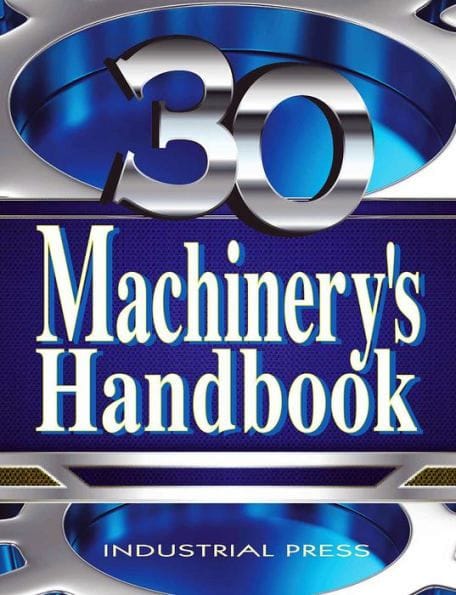![Machinery's Handbook, Toolbox Edition [Source: Amazon]](https://fabbaloo.com/wp-content/uploads/2020/05/image-asset_img_5eb0a8a00de60.jpg)
This week’s selection is the comprehensive Machinery’s Handbook originally by Erik Oberg.
I say “originally”, as this book is quite old, having first been published in 1914. The initial author, Oberg, passed away in 1951, some 67 years ago. Since then the Handbook has been driven by other authors and its contents continually enhanced to keep up with developments in mechanical engineering.
That’s what this book is all about. It’s a fantastic compendium of practical mechanics, something anyone designing a mechanical device would require. The book covers a number of basic topics in mechanical engineering, including:
- Mathematics Mechanics and Strength of Materials
- Properties, Treatment, and Testing of Materials
- Dimensioning, Gauging, and Measuring
- Tooling and Toolmaking
- Machining Operations
- Manufacturing Processes
- Fasteners
- Threads and Threading
- Gears, Splines and Cams
- Machine Elements
- Measuring Units
While this list is short, the details are by no means miniscule. In fact, the current edition – the thirtieth, no less – has almost 3,000 pages of detailed information, formulas, diagrams and advice.
The book is available in the Toolbox edition here, which is a smaller-sized version suitable for, well, your own toolbox! However, some readers will likely find the fine print a bit too small and may instead opt for the standard desktop edition.
The book is considered so notable in the field that it actually has its own Wikipedia entry, here.
The most recent edition includes several new features, including:
- Expanded metrology section, including v-blocks and micrometer, vernier, and dial calipers.
- New fluid power section covering pneumatic, hydraulic, and vacuum theory and applications.
- New powder metallurgy section, including additive manufacturing.
- Even more useful specs, including tap drill sizes for Unified threads, reaming allowances for drilling, mesh and grit sizes, rules for figuring tapers, and assembly with pins and studs.
- Recently added information on sheet metal and presses, keys and keyways, shaft alignment, taps and tapping, helical coil screw thread inserts, metric screw threads, miniature screws, fluid mechanics, solid geometry, statistics, calculating hole coordinates and thread dimensions, and distinguishing between bolts and screws.
The book is also moving towards metrification, having adapted portions of the book already.
But as old as some of the material is, you can be assured that physics and engineering work the same today as they did over 100 years ago.
Or at least, until something very interesting happens.
Via Amazon











This week’s selection is “3D Printing Projects” by Dorling Kindersley, a.k.a. “DK”.